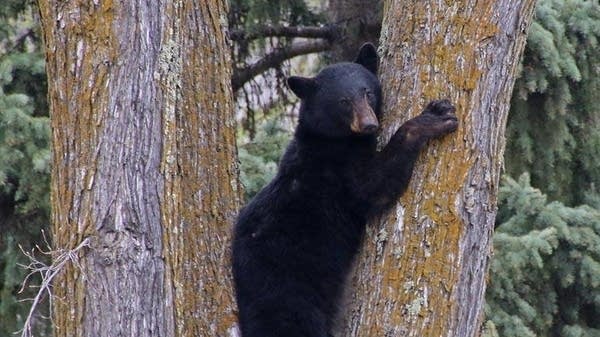With food scarce amid drought, bear sightings on the rise in Minnesota

A black bear climbs a tree in downtown Duluth on May 6, 2015.
Andrew Krueger | MPR News 2015
Go Deeper.
Create an account or log in to save stories.
Like this?
Thanks for liking this story! We have added it to a list of your favorite stories.


